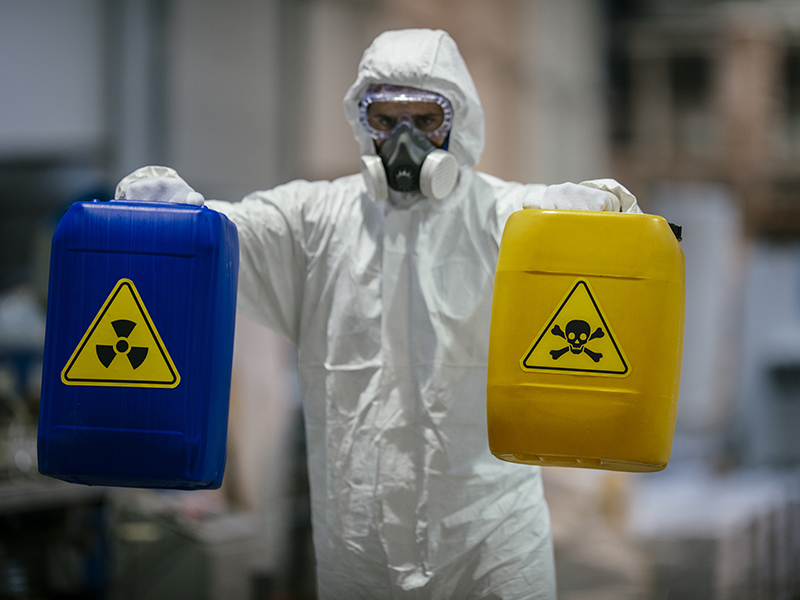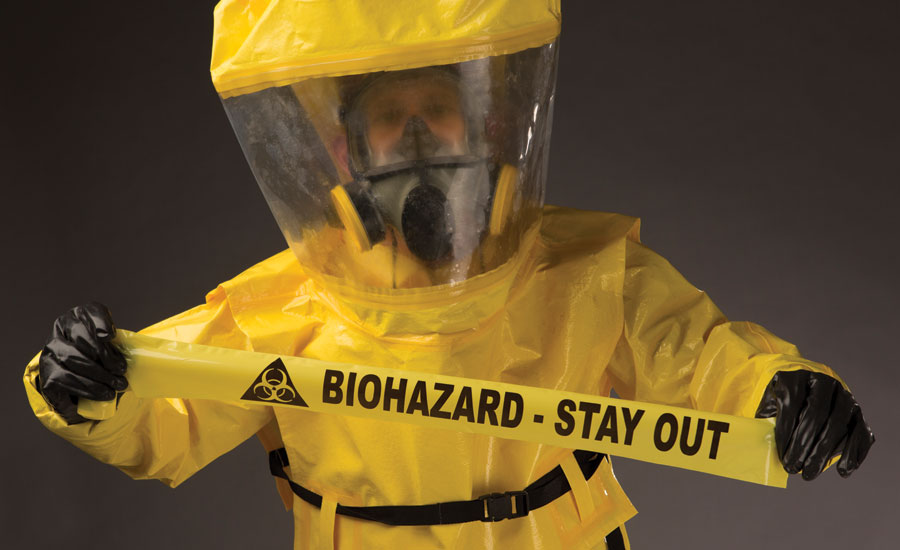Expert Biohazard Cleansing and Purification for Blood, Bodily Fluids, and Hazardous Products
The prospective health and wellness threats connected with exposure to biohazards emphasize the vital demand for meticulous handling and extensive cleanup. As we browse the elaborate landscape of biohazard clean-up, comprehending the nuances of policies, conformity, and the customized equipment at play comes to be vital in making sure a detailed and secure purification process.
Wellness Threats of Biohazard Exposure
Direct exposure to biohazards postures substantial wellness threats that can cause serious consequences for areas and individuals alike. Biohazards include a broad variety of biological compounds, including blood, physical liquids, mold, germs, viruses, and various other possibly transmittable products. When people come into call with these biohazards, whether with accidents, incorrect handling, or ecological direct exposure, they encounter the risk of having serious health problems or diseases.
Among the key wellness dangers connected with biohazard exposure is the transmission of contagious diseases. Bloodborne microorganisms such as HIV, hepatitis B and C, and numerous bacteria can be existing in biohazardous materials, posturing a direct danger to human health. Breathing in air-borne biohazards like mold spores or coming into contact with polluted surface areas can additionally cause respiratory concerns, allergies, and various other unfavorable health and wellness results.
Moreover, biohazard exposure can have long-lasting health implications, with some illness manifesting years after the first get in touch with (Blood Cleanup). As a result, it is important to prioritize correct biohazard cleansing and decontamination to minimize these wellness dangers and make certain the safety and security of people and neighborhoods

Specialized Training for Biohazard Cleaning
When it involves taking care of biohazard cleaning successfully and securely, specialized training plays a basic function in ensuring appropriate purification treatments are followed. Biohazard clean-up needs specific knowledge and abilities to properly mitigate dangers related to bloodborne microorganisms, physical fluids, and harmful products. Professionals learnt biohazard cleanup go through extensive instruction on exactly how to safely handle, remove, and take care of biohazardous materials to prevent contamination and exposure.
Specialized training for biohazard cleanup covers a variety of essential subjects, including proper individual safety equipment (PPE) use, bloodborne microorganism understanding, purification strategies, and contaminated materials disposal methods. People educated in biohazard cleaning are geared up with the necessary experience to assess contamination degrees, recognize prospective risks, and execute appropriate cleaning treatments in conformity with regulatory criteria.
Continuous training and education are extremely important in the field of biohazard cleaning to stay upgraded on the latest purification modern technologies, safety procedures, and laws. By buying specialized training, biohazard cleaning experts can successfully react to emergency situation cleaning situations and safeguard both public health and the atmosphere.
Value of Proper Decontamination Strategies
Making use of proper decontamination strategies is essential in biohazard clean-up to successfully remove harmful products and reduce health risks. Effective decontamination not only guarantees the removal of noticeable traces of blood, physical fluids, and other biohazards yet additionally targets undetectable pathogens that might posture major wellness risks if not correctly eliminated. By adhering to strict purification methods, trained specialists can significantly lower the threat of direct exposure to hazardous microorganisms, viruses, and germs that can cause conditions or infections.
Appropriate decontamination techniques include the use of specialized tools and anti-bacterials that are especially created to counteract biohazards successfully. Comprehensive cleaning and disinfection of polluted locations are important to protect against the spread of microorganisms and make sure a secure environment for passengers. Additionally, the correct disposal of biohazardous important site waste adhering to decontamination procedures is essential in stopping contamination of various other surface areas or people.

Tools and Tools for Safe Cleanup
When dealing with blood, bodily fluids, or visit here dangerous products, biohazard cleansing experts depend on specialized gear to decrease direct exposure risks and extensively decontaminate the affected location. Additionally, biohazard cleaning kits including disinfectants, absorptive products, and biohazard bags are used to securely dispose and have of contaminated items.
Advanced cleansing devices like hospital-grade anti-bacterials, HEPA-filtered vacuums, and misting devices are utilized to sterilize surfaces and eliminate biohazards properly. Specialized tools such as sharps containers and biohazard waste disposal bins are made use of to securely handle sharp items and biohazardous waste materials. By using the best tools and devices, biohazard cleansing experts can ensure a thorough clean-up procedure that prioritizes security and minimizes health and wellness threats for both employees and owners of the affected area.
Regulations and Conformity in Biohazard Cleaning
Proper adherence to guidelines and compliance standards is vital in biohazard cleansing to make sure the security of both personnel and the setting. Federal government companies such as OSHA (Occupational Security and Wellness Administration) and the EPA (Epa) have actually developed particular guidelines for biohazard cleanup treatments to lessen health and wellness threats and environmental contamination. These laws cover a variety of elements including the handling, transport, and disposal of biohazardous materials, as well as the necessary training and safety equipment required for workers associated with the cleanup process.
Biohazard cleansing firms must remain up-to-date with these guidelines to Home Page guarantee that their operations meet the called for safety criteria. Failing to follow these laws can result in extreme repercussions, including fines, lawsuit, and threatening the health and wellness of people and the atmosphere. By following stringent guidelines and compliance measures, biohazard cleansing business can effectively minimize threats and make certain a safe and comprehensive cleaning process for all events involved.
Verdict
To conclude, biohazard cleaning and purification call for customized training, proper methods, and adherence to guidelines. Exposure to blood, bodily fluids, and unsafe materials postures significant health threats, making it essential to utilize the ideal tools and tools for risk-free cleanup. By adhering to stringent procedures and guidelines, specialists can successfully minimize the threats connected with biohazard direct exposure and ensure the safety and security of both themselves and others.
As we browse the elaborate landscape of biohazard cleaning, recognizing the subtleties of regulations, conformity, and the specialized equipment at play comes to be imperative in ensuring a risk-free and extensive decontamination procedure. (Blood Cleanup)
When it comes to taking care of biohazard clean-up successfully and securely, specialized training plays a basic role in making certain proper purification procedures are complied with.Using correct purification strategies is essential in biohazard cleanup to efficiently remove harmful products and decrease wellness threats. In addition, biohazard cleansing kits containing anti-bacterials, absorbing products, and biohazard bags are utilized to safely contain and dispose of contaminated products.
Government agencies such as OSHA (Occupational Safety And Security and Health And Wellness Administration) and the EPA (Environmental Protection Agency) have actually established details guidelines for biohazard cleanup treatments to reduce health threats and ecological contamination.